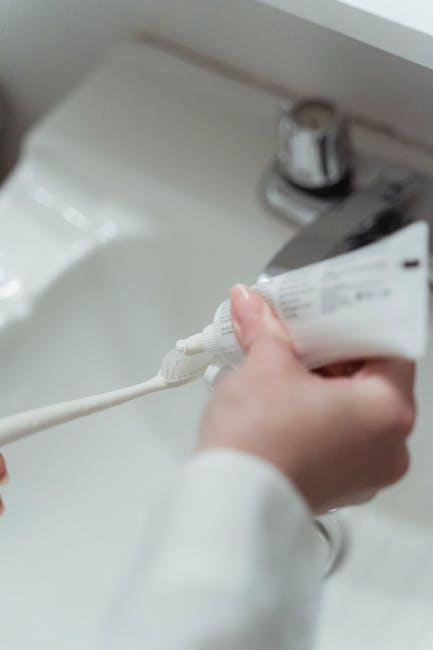Fluoride Ban Could Create Cavities For 1 Of Every 3 U.S. Kids – U.S. News & World Report
Fluoride has long played a pivotal role in preventing tooth decay, especially among children. Recent discussions around a potential fluoride ban in the U.S. have sparked concern among dental health professionals and parents alike. According to U.S. News & World Report, such a ban could increase cavities for 1 out of every 3 children nationwide — a staggering statistic that deserves attention.
Understanding Fluoride’s Role in Children’s Dental Health
Fluoride is a natural mineral that helps strengthen tooth enamel and makes teeth more resistant to acid attacks from plaque bacteria and sugars. Its use in public water supplies, toothpaste, and dental products has significantly reduced cavities and improved oral health for decades.
- Enhances enamel remineralization
- Reduces incidence of dental caries (cavities)
- Cost-effective public health measure
- Safe when used correctly and in recommended amounts
The Potential Impact of a Fluoride Ban on U.S. Children
Experts warn that removing fluoride from water and other common dental products could lead to an alarming rise in tooth decay among the nation’s youth. Some key points highlighted include:
- Increased risk of cavities in approximately 33% of children.
- Higher dental treatment costs for families and public health systems.
- Worsening oral health disparities, particularly in low-income and minority communities.
- Long-term consequences could extend into adulthood, affecting overall health.
Statistics: How Fluoride Protects Against Cavities
| Factor | With Fluoride | Without Fluoride |
|---|---|---|
| Percentage of Kids with Cavities | Approximately 20% | Up to 33% |
| Average Dental Treatment Cost per Child | $150 – $200 | $300 – $450 |
| Cases of Severe Tooth Decay | Low | Significantly Higher |
Benefits of Fluoride: Why It Matters for Kids
The preventive benefits of fluoride make it an essential mineral in children’s dental care routine. Here are some benefits that underscore its importance:
- Reduces Tooth Decay: Fluoride enhances enamel strength to fight decay-causing acids.
- Affordable Preventive Measure: Community water fluoridation reaches diverse populations at a low cost.
- Promotes Overall Health: Prevents infections stemming from cavities that can affect eating, sleeping, and speech development in kids.
- Supports School Attendance: Healthier teeth mean fewer absences related to dental pain and treatments.
Concerns and Misconceptions About Fluoride
Although fluoride has widespread approval by health organizations like the CDC and American Dental Association, some concerns still circulate:
- Fluorosis: Excessive fluoride during childhood can cause mild discoloration of the teeth, known as dental fluorosis, usually cosmetic and preventable.
- Overexposure Risks: Taking in too much fluoride can be harmful, but this is rare with proper use and regulations.
- Natural vs. Artificial Fluoride: Both forms have the same benefits when used appropriately.
Practical Tips for Parents to Protect Children’s Teeth Without Fluoride
If a fluoride ban moves forward or if you prefer to limit fluoride exposure, these strategies can help maintain your child’s dental health:
- Maintain a Healthy Diet: Minimize sugary snacks and drinks that cause tooth decay.
- Practice Good Oral Hygiene: Regular brushing and flossing to remove plaque.
- Use Fluoride-Free Alternatives: Many natural toothpastes provide safe cleansing options, though with less cavity protection.
- Visit the Dentist Regularly: Early detection and treatment to prevent cavities from worsening.
Quick Daily Dental Care Routine for Kids
| Step | Details |
|---|---|
| Brush Twice a Day | 2 minutes each time, use pea-sized toothpaste |
| Floss Daily | Helps remove food particles and plaque between teeth |
| Limit Sugary Foods | Reduce risk of acid attacks on enamel |
| Regular Dental Visits | Schedule checkups every six months |
Case Study: Impact of Fluoride Removal in Communities
One notable example is a community in Canada that removed fluoride from its water supply and reported a sharp increase in cavities within two years. Dental clinics saw a rise in cavity treatments, leading to increased healthcare costs and missed school days for children.
“Fluoride removal raised concerns immediately. Within a short timeframe, caries rates climbed among our kids, impacting families financially and emotionally,” said Dr. Lisa Grant, a local dentist.
Conclusion: Balancing Safety and Benefits for Our Kids
While debates around fluoride safety continue, the overwhelming evidence from decades of research supports its role in protecting children’s dental health. A fluoride ban could lead to an avoidable rise in cavities, affecting 1 out of every 3 U.S. kids as reported by U.S. News & World Report. Parents, healthcare providers, and policymakers must work together to ensure children continue benefiting from fluoride’s cavity-preventing properties in safe, monitored ways.
Ultimately, maintaining strong oral hygiene habits, fostering healthy dietary choices, and keeping updated with dental care remain essential—whether fluoride is present or not.


